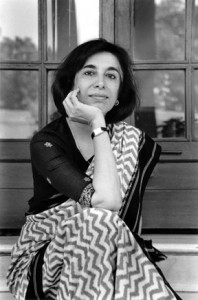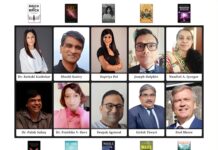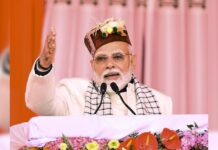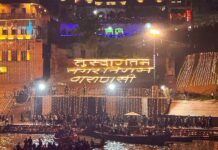 NEW DELHI: What does it take to be a writer? An array of 23 formidable writers from India, Pakistan, Bangladesh and Sri Lanka, share stories of their journey as they seek to answer this question and many more in a new book.
NEW DELHI: What does it take to be a writer? An array of 23 formidable writers from India, Pakistan, Bangladesh and Sri Lanka, share stories of their journey as they seek to answer this question and many more in a new book.
Edited by novelist Manju Kapur, “Shaping the World: Women Writers on Themselves” is an anthology of intimate, honest and brave accounts that provide an insight into the realm of writing, its adventurous terrain of highs and lows and how it continues to shape these writers as well as the world.
The writers reveal their inspirations, be it another writer, a personal tragedy, or triumph, a fascination with the English language, or a passion for putting pen to paper and finding wings.
Writing is a labor of love for Anita Nair, author of novels like “The Better Man”, “Ladies’ Coupe”, “Mistress” and a short story collection “Satyr of the Subway.”
“You write because you feel the great urge to tell a story. There is a singular feeling of achievement that nothing else will ever provide; no award, no number of bestselling books, nothing is going to match that flush of joy that I know when I write well and this is the driving spirit that relentlessly keeps me doing what I do,” she says.
Pakistani author Bina Shah says that when a writer is asked to produce an essay explaining why she writes, she suffers her first major attack of writer’s block in years.
“Writing is very much like walking a tightrope: the minute you stop what you’re doing to look down, you start to wobble and sway in any minor breeze; you lose self-confidence and the very magic of what you do every day, easily and swimmingly, evaporates, replaced by a crippling insecurity and the odd compulsion to relate all your childhood grievances on the blank page in front of you.”
Shinie Antony, who had written two collections of short fiction and as many novels, is more comfortable with short stories.
“The novel is a matter of much plotting while the short story is a mood, an emotion, a point of view, an angle, a tapping into ‘somewhere out there’,” she says.
According to Janice Pariat, the reason why she writes “can be traced with a magical, long-winded silver thread, to that moment – the seconds before I picked my first holiday read (usually something from Enid Blyton’s ‘Famous Five’ series), when I stood there, all of 10 or 11, looking up at a bookshelf with wonder”.
For Kavery Nambisan, who is a surgeon, the responsibility of being a writer is as exacting as that of being a doctor.
“As a surgeon and novelist, I live in two worlds: The first is that of precise anatomical knowledge, diagnosis and practical skills learnt formally, in medical school and hospitals. It is mentally demanding, physically exhausting and quite often stressful,” says Nambisan.
Her novel “The Story That Must Not Be Told” was shortlisted for the Man Asian Literary Prize 2008.
“The second, the world of writing is one in which I strive to shape imagination and experience into meaningful sentences.
It is where I fulfill a simple urge to put words on paper so that others may read and appreciate it,” she says.
Jaishree Misra, Author of novels like “Scandalous Secret”, “Ancient Promises”, “Accidents Like Love and Marriage” and “The Little Book of Romance” says the process of writing wasn’t always slow for her.
“On certain days, it was like a terrifying roller-coaster ride; uncontrolled and unstoppable. On others, the pace was halting, tentative, fearful almost.”
In looking for contributors for the anthology, Kapur approached established novelists who wrote in English.
“These are writers who have experimented with short stories, poems, travel pieces and journalism, but all of them write novels. I asked every writer I was able to contact a series of questions,” says Kapur.
“How do you write, why do you write, how did you begin, which audience do you have in mind, what do you hate or love about writing? Do you have to struggle with the label of being a woman writer? Was it difficult to find a publisher? Would you like to comment on any aspect you find significant about your writing? The form of the article was left fluid,” she says.
The response to questions, says the author bacame the book.
“All the essays for this volume appear here in print for the first time. It is not easy to write a piece for an importunate editor, in the middle of other commitments, and I am grateful that these writers have put up with requests for immediacy, clarity and originality, and that they have agreed to share a very private part of their lives,” Kapur, whose first novel “Difficult Daughters” won the Commonwealth Prize for First Novels (Eurasia Section), writes in introduction.
Anjum Hasan, author of “Difficult Pleasures”, was greatly influenced by poet Pablo Neruda, who was both her hero and nemesis, and she “wanted to become (like him), write his words as if they were my words”.
Pakistani writer Moni Mohsin does not want to place herself in that bracket of writers who have always nursed a burning passion to write, who have known since childhood with unswerving certainty that this is their destiny.
“I never kept diaries, journals or notebooks. Never thought of writing as anything but a tedious obligation,” she says.
Veteran writer from Mohsin’s country Bapsi Sidhwa stumbled upon writing by accident when she wanted to chronicle some sequence of events and stories while she visited the site of the Karakoram Highway that follows the old Silk Route from China to Eastern Europe during her honeymoon.
The story of a runaway bride she heard during her stay went to become her first novel “The Pakistani Bride”.
The other contributors are Ameena Hussein, Shashi Deshpande, Mishi Saran, Tania James, Tishani Doshi, Ru Freeman, Susan Viswanathan, Lavanya Sankaran, Meira Chand, Namita Devidayal and Maniza Naqvi. -PTI






